- About us»
- Net income calculator»
- Population aging»
-
- Least developed regions»
-
- Average wage
- Material need benefits
- Meal allowance
- Counties of Slovakia
- Inflation
- Living and Subsistence Minimum
- Unemployment of Czechia and Slovakia
- NACE Classification
-
- Life expectancy
- Gender differences
- Youth unemployment and NEET
- Minimum wage in EU
- Unemployment rates of different age groups
- Share of salaries on GDP
- Employment rate
- Long term unemployment
- Unemployment rate
- NEET
- Percentage of employees ususally working at nights
-
- Bratislava and surroundings
- Kopanice
- Danube river
- lower Vah river
- middle Vár river
- upper Nitra river
- lower Nitra river
- Mining cities
- Kysuce a Orava
- upper Vah river - Liptov
- Spiš cities
- upper Hron river
- Juhoslovenská kotlina
- Košice fold and Torysa river
- upper Zemplín
- lower Zemplín
- EU regions
- NUTS3 regions of Slovakia
- LAU1 dataset
-
- Projects and activities
- Inclusive growth»
- Good work
- Project SKRS
- Social system – reality and vision
- Library
-
- Education of unemployed
- Young unemployed not taking part in education
- Proposal to change the system of education funding
- News»
- Contact
Slovenia – SI
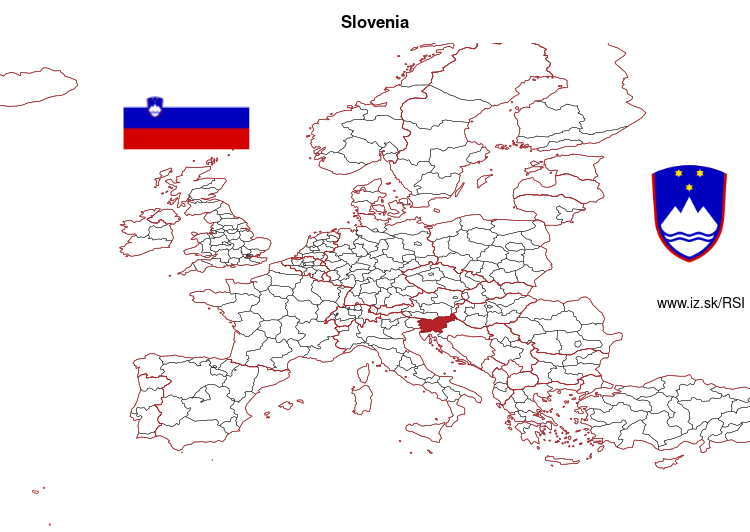
More on wikipedia wikidata Q215 on OpenStreetMap Slovenia slovensky: SI
Subregions: Slovenia, Eastern Slovenia, Western Slovenia
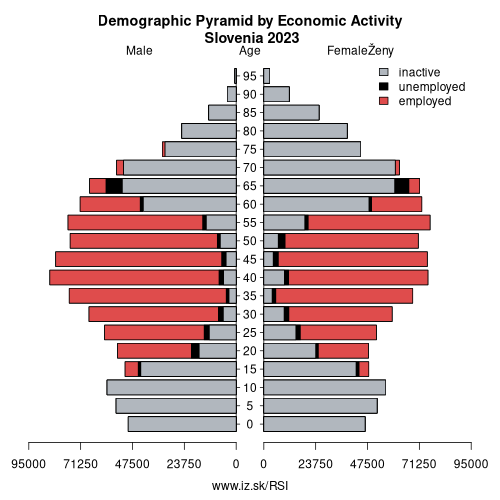
Unemployment
| Indicator | Period | Value |
|---|---|---|
| Unemployment | ||
| unemployment rate | 2024 | 3.6 |
| youth unemployment rate | 2024 | 10.9 |
| unemployment rate of low educated people | 2025q3 | 8.4 |
| Long term unemployment | ||
| long term unemployment | 2025q3 | 1.1 |
| share of long term unemployed | 2024 | 30.6 |
Composition of population according to age group, education and economic activity, Slovenia
| Age group | Low education | Middle education | High education |
|---|---|---|---|
| Y20-29 | P: 16.5 E: 8.1; U: 1.8; I: 6.6 | P: 131.3 E: 86.8; U: 5.6; I: 38.9 | P: 55.9 E: 42.2; U: 2.1; I: 11.6 |
| Y30-39 | P: 19.8 E: 13.2; U: 1.3; I: 5.3 | P: 134.5 E: 120.7; U: 4.3; I: 9.5 | P: 113.0 E: 107.2; U: 2.0; I: 3.8 |
| Y40-49 | P: 26.5 E: 15.8; U: 1.9; I: 8.8 | P: 166.7 E: 151.4; U: 4.7; I: 10.6 | P: 122.9 E: 118.3; U: 1.9; I: 2.7 |
| Y50-59 | P: 49.9 E: 32.2; U: 1.3; I: 16.4 | P: 173.6 E: 143.7; U: 3.4; I: 26.5 | P: 74.2 E: 69.9; U: 0.9; I: 3.4 |
| Y60-69 | P: 63.0 E: 8.8; U: 0.5; I: 53.7 | P: 162.9 E: 29.6; U: 2.2; I: 131.1 | P: 54.0 E: 24.5; U: 1.0; I: 28.5 |
Note: in thousands in 2023, according to labour force sample survey. P – total population, E – employed, U – unemployed, I – number of economically inactive
Demographics
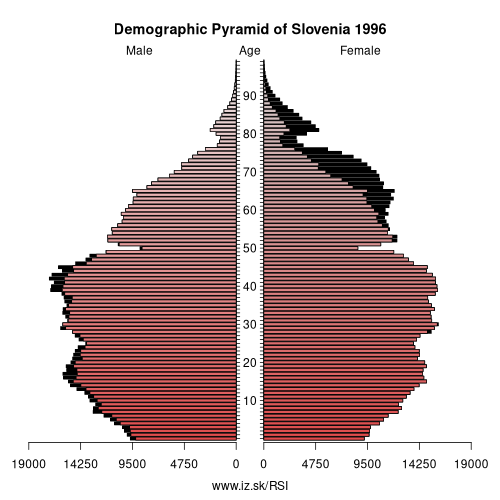
| Indicator | Period | Value |
|---|---|---|
| Demographics | ||
| number of inhabitants | 2024 | 2 123 949 |
| population density | 2023 | 105.3 |
| old-age dependency ratio | 2024 | 34.3 |
| Population ageing | ||
| unemployment rate – over 55 years | 2025q3 | 3.2 |
| aggregate replacement ratio | 2024 | 0.43 |
| aggregate replacement ratio – females | 2024 | 0.42 |
| life expectancy of a 50 year old | 2023 | 33.3 |
| healty life expectancy at 50 years | 2023 | 21.2 |
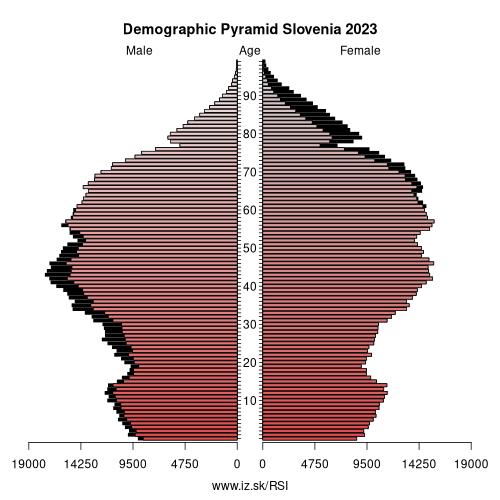
Employment by sectors, Slovenia
| NACE r2 | % | NACE r2 | % | ||
|---|---|---|---|---|---|
| A | 37.5 | 4% | B-E | 254.7 | 26% |
| F | 63.9 | 6% | G-I | 216 | 22% |
| J | 35 | 4% | K | 19.3 | 2% |
| L | 5 | 1% | M_N | 99.5 | 10% |
| NRP | 3.1 | 0% | O-Q | 223.3 | 22% |
| R-U | 41.1 | 4% | TOTAL | 998.4 | 100% |
Data for the period year 2024. Source of the data is Eurostat, table [lfst_r_lfe2en2].
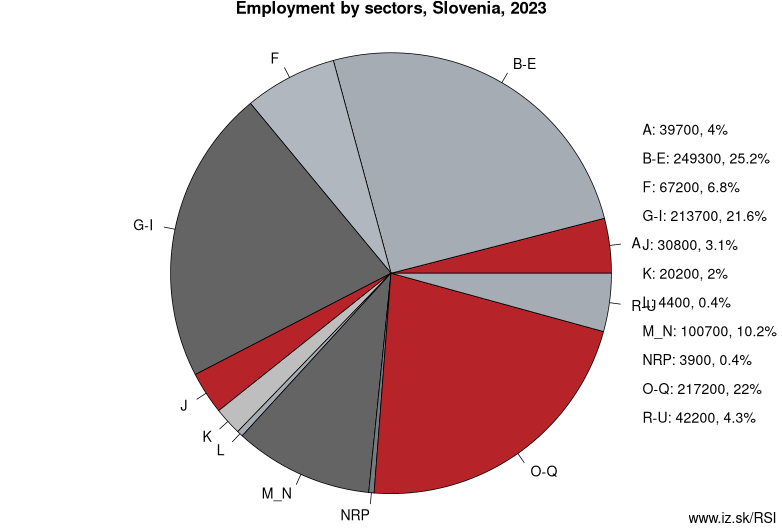
From Wikipedia: Slovenia ( (listen) sloh-VEE-nee-ə; Slovene: Slovenija [slɔˈʋèːnija]), officially the Republic of Slovenia (Slovene: Republika Slovenija , abbr.: RS), is a country located in southern Central Europe at a crossroads of important European cultural and trade routes. It is bordered by Italy to the west, Austria to the north, Hungary to the northeast, Croatia to the southeast, and the Adriatic Sea to the southwest. It covers 20,273 square kilometers (7,827 sq mi) and has a population of 2.07 million. One of the successor states of the former Yugoslavia, Slovenia is a parliamentary republic and a member of the United Nations, of the European Union, and of NATO. The capital and largest city is Ljubljana.
Slovenia has a mostly mountainous terrain with a mainly continental climate, with the exception of the Slovene Littoral, which has a sub-Mediterranean climate, and of the northwest, which has an Alpine climate. Additionally, the Dinaric Alps and the Pannonian Plain meet on the territory of Slovenia. The country, marked by a significant biological diversity, is one of the most water-rich in Europe, with a dense river network, a rich aquifer system, and significant karst underground watercourses. Over half of the territory is covered by forest. The human settlement of Slovenia is dispersed and uneven.
Slovenia has historically been the crossroads of Slavic, Germanic, and Romance languages and cultures. Although the population is not homogeneous, Slovenes comprise the majority. The South Slavic language Slovene is the official language throughout the country.
Other: Sweden, Slovenia, Slovakia
Neighbours: Croatia, Italy, Hungary, Austria
Subregions: Slovenia, Eastern Slovenia, Western Slovenia
Suggested citation: Michal Páleník: Europe and its regions in numbers - Slovenia – SI, IZ Bratislava, retrieved from: https://www.iz.sk/PSI, ISBN: 978-80-970204-9-1, DOI:10.5281/zenodo.10200164

 Share
Share Facebook
Facebook Twitter
Twitter News
News